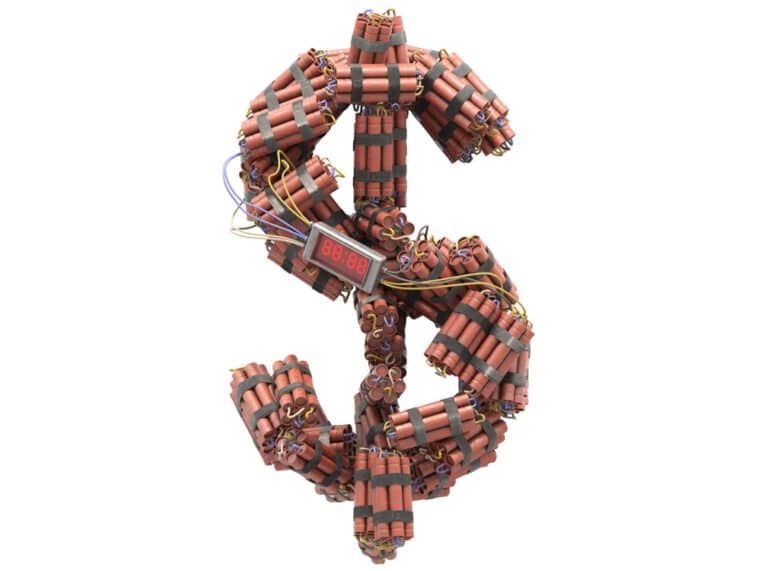
Public Pension System Facing Serious Funding Gaps
EDITOR NOTE: If you rely on a public pension plan to cover your annual living expenses, it might be wise to check on the resiliency of your plan. For every state pension plan that’s considered stable, or 90% funded, there are between four to a dozen that are considered “distressed,” their funds depleted to levels deeper than what they saw in the Great Recession. Pensions are experiencing a funding gap of around $1.6 trillion, and there are a number of economic and medical factors that may increase that gap in the months (or years) to come. Hopefully, you’re diversified into safe haven assets. If not, you’re 100% vulnerable to the whims of today’s socio-economic reality.
Coronavirus, disappointing investment returns and declining interest rates, pose a triple threat to the health of the US public pension system, which is haemorrhaging cash and heading for a record funding shortfall.
The total funding gap for the 143 largest US public pensions plans is on track to reach $1.62tn this year, significantly higher than the $1.16tn recorded in 2009 in the aftermath of the global financial crisis, according to Equable Institute, a New York-based non-profit think-tank.
The weak financial condition of the US public pension systems poses severe risks for the living standards of millions of employees and retired workers.
Equable estimates that returns of US public pension plans averaged -0.4 per cent over the 12 months ended June 30, well below the 7.2 per cent targeted by these schemes.
This dire performance has contributed to the aggregate funded ratio (assets as a share of liabilities) sinking to 67.9 per cent, sliding towards the historic nadir of 63 per cent registered in 2009.
The value of promised pension benefits is growing faster than assets can keep up
Just one in five statewide pension plans can now be classified as “resilient” with a funded ratio of 90 per cent or more for at least two consecutive years.
A dozen more pension plans sank into the “distressed” category with a funding ratio of less than 60 per cent over the past year, taking the total number of distressed plans that need to take immediate steps to strengthen their position to 37.
“The value of promised pension benefits is growing faster than assets can keep up. The resulting shortfalls in pension funding (unfunded liabilities) have grown to be more than 10 per cent of GDP in 9 states, and more than 6 per cent of GDP in a further 24 states,” said Anthony Randazzo, executive director at Equable.
The five states with the largest unfunded liabilities — California, Illinois, New Jersey, Texas and Pennsylvania — together have a shortfall of $693bn, which is larger than the rest of the country combined at $655bn.
Mr Randazzo said the recession triggered by coronavirus and weak economic recovery would reduce tax revenue for state and local governments, forcing them to try to reduce pension costs to relieve pressure on their budgets at a time when public health costs are spiralling higher.
In addition, job cuts by states will shrink the number of active members saving for public pensions from the current level of about 12.4m. The total number of retired beneficiaries already collecting their pension has reached 15.1m, which is driving up cash outflows as pension contributions from state employers and employees have failed to keep pace with the growth of benefit payments.
Net cash outflows reached $113bn in 2019 and have totalled $882bn over the past decade.
Mr Randazzo said public pension plans faced a “vicious cycle” because rising cash outflows led to more pressure on investment returns to meet future retirement payments.
State pension plans on average expect to generate average returns of 7.2 per cent a year, a target that is widely seen as unrealistic given the steady decline in interest rates over the past 30 years, which has reduced their yields from fixed-income assets.
“Each year that investment returns underperform expectations, it perpetuates a vicious cycle. It will be very difficult, and in some cases impossible, for public plans to invest their way back to fiscal health,” he said.
For the latest news and updates, follow us on Google News. Also, if you like our efforts, consider sharing this story with your friends, this will encourage us to bring more exciting updates for you.
Originally posted on TechnoCodex










